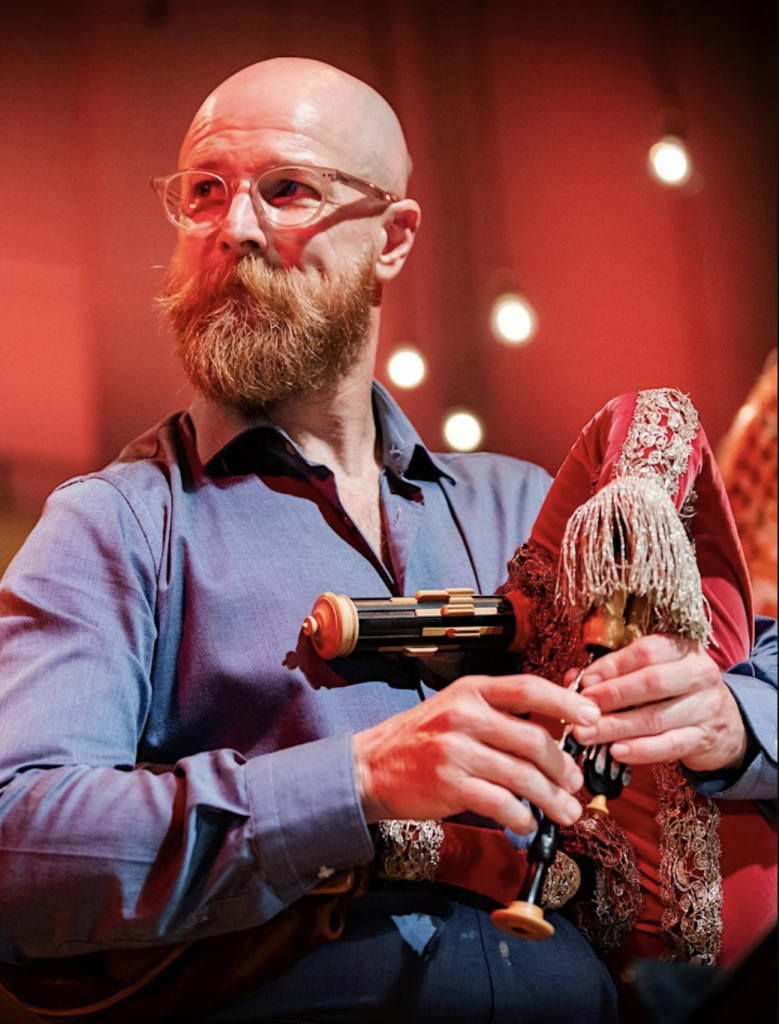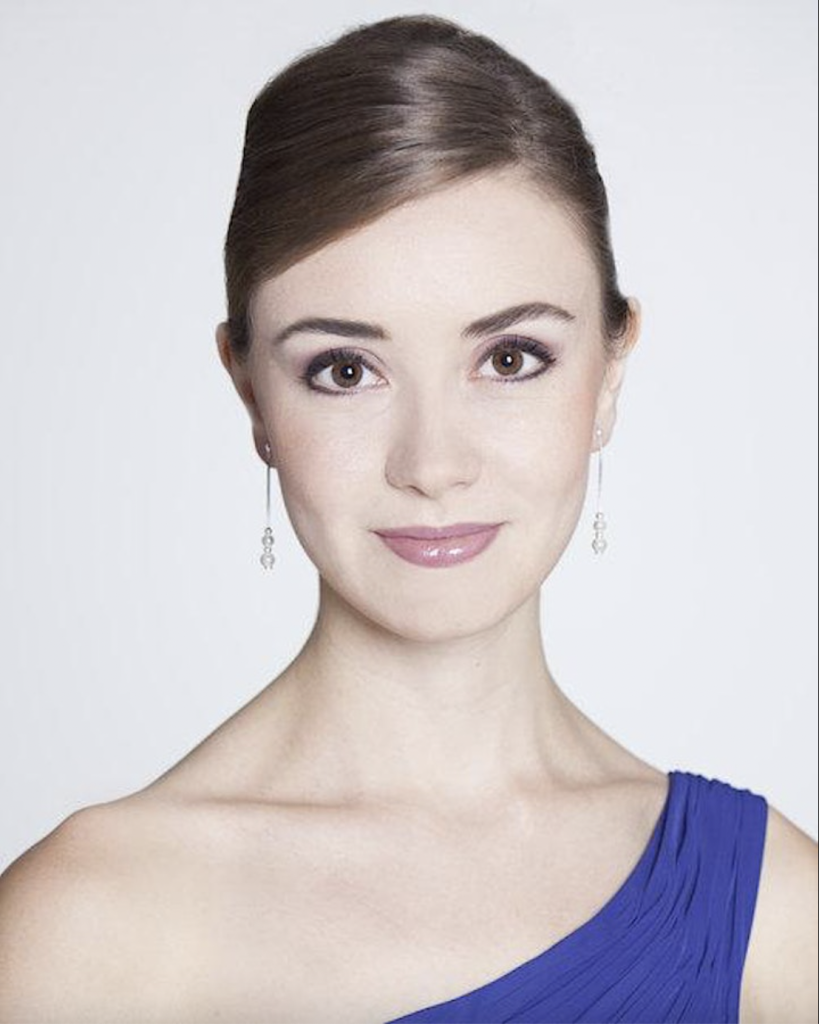This recital was the final event of the Sound, Image, Text symposium, hosted by the Centre for Art History and Theory in the ANU School of Art and Design in August 2023. Below you can view an edited recording of the concert, a concert programme and a transcript of the various introductions to the songs being played. You can also read about the performers.
Music for the Dauphine Program
Erin Helyard, harpsichord
Lauren Lodge-Campbell, soprano
Louis Hurley, tenor
Simon Rickard, musette
ed. and arr. Jean-Benjamin de la Borde (1734–1794)
From Choix de Chansons
Le portrait reconnu—S.1.01
Lauren Lodge-Campbell, soprano
La dormeuse [Le repos]—S.1.04
Louis Hurley, tenor
Le clavecin—S.2.07
Lauren Lodge-Campbell, soprano
La statue de l’amitie—S.2.11
Louis Hurley, tenor
Michel Corrette (1707–1795) [13]
Pièces pour la Musette Op. 5
Suite I
Rondeau
Canon
Rondeau
Menuet
Fanfare
Tambourin
Chaconne
Le Coucou—Gaiment
Simon Rickard, musette
ed. and arr. Jean-Benjamin de la Borde (1734–1794)
From Choix de Chansons
Le loup garou—S.2.13
Lauren Lodge-Campbell, soprano
Regrets de David sur la mort de Betsabée—S.2.25
Lauren Lodge-Campbell, soprano
Le Concert—S.2.22
Louis Hurley, tenor
Priere a Morphée—S.3.13 2 verses
Louis Hurley, tenor
Joseph Bodin de Boismortier (1689–1755)
Il Divertissemens de Campagne Op. 49
Divertissement I – extracts
Prelude—Lentement
Marche
Gracieusement
Menuet
Rondeau—Gracieusement
Paisane
Sarabande
Chaconne
Simon Rickard, musette
ed. and arr. Jean-Benjamin de la Borde (1734–1794)
From Choix de Chansons
La raison deraisonable—S.4.06
Louis Hurley, tenor
Le dernier parti a prendre—S.4.20
Lauren Lodge-Campbell, soprano
Joseph Bodin de Boismortier (1689-1755)
Chantez avec moi ma musette
Erin Helyard, harpsichord
Lauren Lodge-Campbell, soprano
Louis Hurley, tenor
Simon Rickard, musette
Transcript of Performance
Introduction to the first set of Chansons
Erin Helyard
“Tonight we have a small selection Chansons to play, and first up we have four songs. The very first one is the first song in the whole volume and it is called ‘Le portrait reconnu’. It is particularly well suited as the first song in the selection because it is dedicated to the Dauphine of France, whose portrait is in the picture. To the right of Cupid in the picture a putti places his hand to his ear to show us he is listening, and there is a riddle at the bottom of the print that says, ‘Ah! It is the Nymph of France, we recognise her portrait there.’ The Nymph of France is ofcourse Marie Antoinette but also it is allegorically France in a larger sense.
The second song we have is a beautiful piece called ‘Le dormeuse’, or the repose, the sleep. And in this picture we see a young courtier has come across his lover who is sleeping in a grove. Beautifully decorated, the song itself is set as a sommeil, which is a French genre that is very famous for opera of the period, which depicts a sleeping scene using very long melodies.
The third song in this first set is called ‘Le clavecin’, and that is the French name for this instrument I am playing tonight. This is made by Australian maker Carey Bebe, who’s privileged to join us in the audience tonight. It was recently acquired by the Australian National University School of Music. This particular song is one of many humorous songs in the collection. So strong was the connection in contemporary readers’ minds between sexuality and musicality that this chanson expressly links a girl’s nascent sexuality with beginner’s lessons at a harpsichord. So, Lise is her name, she complains to her mother that she sings with no pleasure because only her maid listens. Her mother says, ‘well take up the harpsichord, you’ll believe it has a tender soul and it will sigh like you’. So an instrument is brought for her. Lise cannot wait to try it but as soon as she discovers it there’s a voice inside it. Suddenly the instrument opens and a young man falls at her feet. Night after night at the harpsichord our ‘naïve one’ soon learns all the tones. One day, the mother discovers them making love. In response, Lise says ‘I was just following orders. I thought as well as I might in following your pleasure, take a master who knows how to make me understand the instrument’. And in this song you’ll hear the busy fingers of the protagonist at the keyboard are evoked in the accompaniment figures that Laborde has written.
The final song in this set is called ‘La statue de l’amitie’, or ‘the statue of friendship’ and in this print, taking its leave from the lyrics of the song, we see a scene set in the studio of the Ancient Greek sculptor Praxiteles. The engraver, La Bouteux, depicts that space and dresses all of his figures in classical garb. This is a song about friendship and there is a statue that evokes a story where a young painter had commissioned an artist to make a statue of friendship, but she rejects the work as too formal and too stiff, choosing instead a statue of Cupid, to which the sculpture responds, ‘you ordered a statue of friendship but yet you carry away love’, which is one of the predominant images in this set of songs.”
An introduction to the musette
Simon Rickard
“This evening I will be playing for you this charming little instrument which is contemporary with the music which you are hearing tonight from the Choix de Chansons by Laborde. This is a musette, which is the smallest and the poshest member of the bagpipe family. As you can see, it is dripping with silver lacework and a lovely silk velvet bag here – not a bagpipe of ordinary folks like us. This was a bagpipe of royalty. It was only ever played by the French aristocracy from about 1550 until the year 1780, when Laborde himself, the composer for Choix de Chansons, said that this instrument was absolutely no longer in use. He got his comeuppance in 1794 when he had his head chopped off, along with all the other people who ever played this instrument. This instrument was fabulously, fabulously popular, unimaginably popular in its day, fetishised even. Then, overnight it became extinct. Luckily for us, there is a stack of charming repertoire for this instrument, which Erin and I are going to give you a taste of tonight.”
Introduction to the second set of Chansons
Erin Helyard
“We have another four set of songs. The first one is called ‘Le loup garou’, and it is one of these comic ones. It’s a bizarre story where one of these lovers – the whole set of Choix de Chansons is filled with horny shepherds and horny shepherdesses, and they do anything! Like hide is harpsichords, or in this case, dress up as wolves to gain access to the horny shepherdesses. This particular song is basically a comic scenario of the lover in wolves clothing. It is set by Laborde as a beautiful gavotte, with an agitato arpeggio accompaniment which has a syncopated breathless figure – all very erotic.
The second piece is anything but, actually, it is very serious. This is ‘the regrets of David on the death of Betsabée’. The text of this is David with his harp – which of course in the production would be played on a harp as it was meant to be, but today it will be played on a harpsichord. The biblical character of David is at the foot of the alter and says ‘with these trembling words I applaud the lord’, it is said as a small restitive, and then we get a very beautiful ariette in a very tragic style ‘I punish those, I lose what I adore, the dear author of my crimes’. A very regretful, sad song.
The third chansons in this little set is called ‘Le concert’ and in the entire four volume set this is the only song not by Laborde or an ancient prodigy as an ancient French chanson. It was written by a woman. The music is referred to in the text as M’lady Hamilton, who was Catherine Hamilton, Sir William Hamilton’s first wife. Here, the poetry, just like in ‘Le clavecin’ which we heard earlier, explicitly refers to the appealing musical accomplishments of a lady at the harpsichord. When one plays it at a harpsichord you’ll notice that my hands have to cross and in fact as you do this it brings out the poem itself which says ‘your talents and your attractions in a sensitive soul in a short time have made so much progress. Your eyes initiate our loving torments, but your charming fingers complete the work’. There’s a beautiful print with this that shows eighteenth century people in a salon situation.
The final piece in this set is another serious chanson, very much in a tragic mould called ‘Priere a morphée’. In this case it is quite a gothic representation of the underworld and it is in a wonderful F minor key and very much in the style of Gluck. Morpheus, the god of dreams, is invoked and references are made to poppies and opium and ‘the forgetful waters of the leaf’. The protagonist talks about being surrounded by dreams and visions – a very gothic representation from the 1770s.”
Introduction to Joseph Bodin de Boismortier
Simon Rickard
“The musette was so good at giving you the impression of being in a pastoral or arcadian landscape of everblooming flowers and docile sheep and shepherds and shepherdesses like our singers are being tonight. It was used in opera orchestras for that exact effect. Rameau asked for the musette or more musettes in no fewer than twelve of his operas. Campra, Leclair, Marais, also asked for the musette in their opera orchestras. Those parts were typically taken by oboists, but I think you’ll agree that the sound of the musette is something quite unique. More like a Nokia phone ring tone than an oboe. We’re going to play for you now some music by a composer called Joseph Bodin de Boismortier, who often gets a bit poo-pooed in the twenty-first century because, frankly, because of the cult of Bach. People think that J.S. Bach was some kind of author receiving divine wisdom and channelling it and writing it down on the page. Nothing of the sort. He was a jolly musician, his job was a composer, he would compose a cantata every week for the church fathers and that is how he got paid. Exactly the same with Boismoirtier, only his bosses were not the church fathers, but wealthy amateurs who played the musette. And so, Boismoirtier had to dash off tune after tune after tune in order to satisfy the insatiable hunger for music for this instrument. And I won’t pre-prejudice you but this is rather nice music actually.”
Introduction to the final set of songs
Erin Helyard
“We now come to our final three songs this evening. The first two are from Laborde’s Choix de Chansons, but the last is a little encore for you, a beautiful piece by Boismortier. The text is ‘chantez avec moi ma musette’, so ‘sing with me and my musette. It is a lovely song about – guess who – shepherds and shepherdesses exhibiting their love to each other.
But before that we have two more songs by Laborde. The first is in the comic vein once more. It is called ‘La raison deraisonable’ or ‘the reason I love you is not reasonable’ and in this chanson Laborde really shows off his considerable talents as a composer of opéra comique. Laborde did have some opéra comiques under his belt. Some of them were quite interesting. This really shows off his painting of word colour and it has a beautiful sense that reminds me of some of the leading opéra comique composers of the day like Grétry.
And then arguably the finest and most meticulously constructed of the entire set ‘Le dernier parti a prendre’ which is set by Laborde to a text of his friend, the famous Voltaire. On this occasion Laborde seems to have responded sensitively to Voltaire’s text. First of all you can see a lot of care Laborde took over the setting, not only in the way that it is formed and structured but also in the way that it quotes famous tunes of the day. Most notably you’ll hear a little fragment of Gluck’s ‘J’ai perdu mon Eurydice’. The poem itself is quite touching and, basically, it riffs on the idea that ‘youth is wasted on the young, if you want me to still love give me back the age of love’, Voltaire says in this final beautiful song of Laborde’s Choix de Chansons.”
The Performers

Dr Erin Helyard, harpsichord. Erin is the Artistic Director and co-founder of the celebrated Pinchgut Opera and the Orchestra of the Antipodes (Sydney) and a Senior Lecturer at the Sydney Conservatorium of Music. He regularly appears as a collaborator with the Australian Chamber Orchestra and Erin has distinguished himself as a conductor in dynamic performances with the Sydney, Adelaide, Tasmanian, and Queensland Symphony Orchestras, ACO Collective, the Australian National Academy of Music, the Australian Haydn Ensemble, and as a duo partner on historical pianos with David Greco (baritone) and Stephanie McCallum (piano).
Photo (c) Pinchgut Opera

Simon Rickard, musette. Simon is a specialist in historical bassoons. He has toured and recorded with countless period ensembles including Les Arts Florissants, the Gabrieli Consort, Pinchgut Opera, the Orchestra of the Antipodes, the Australian Brandenburg Orchestra, Opera Australia, the Australian Chamber Orchestra, Latitude 37, Genesis Baroque, the Australian Haydn Ensemble, Ironwood and La Compañia, as well as his own renaissance consort, Unholy Rackett, named for the bizarre renaissance woodwind instrument in which Simon is a leading specialist.
Photo (c) Lando Rossi

Lauren Lodge-Campbell, soprano. Lauren has recently performed such roles as the1st Witch in Purcell Dido and Aeneas with William Christie and Les Arts Florissants; Euridice in Charpentier La descente d’Orphee at the Vache Baroque Festival; Bach Christmas Oratorio with the Britten Sinfonia under Stephen Layton; a revival of Handel Hercules at the Händel-Festspiele Karlsruhe; Purcell King Arthur with the Gabrieli Consort; and Bach Magnificat with the Royal Northern Sinfonia under Nicholas McGegan. Lauren Lodge-Campbell was awarded both 2nd and Audience Prize at the 2018 Handel Singing Competition and was a member of Les Arts Florissants’ Le Jardin des Voix.
Photo (c) Pinchgut Opera

Louis Hurley, tenor. Louis is a Sydney-based tenor and the inaugural The Humanity Foundation Taryn Fiebig Scholar through Pinchgut Opera. After completing a Bachelor of Music and Graduate Diploma of Music at the Western Australian Academy of Performing Arts (WAAPA), Louis furthered his studies, as a Hazell Scholar, with a Master of Music at the Guildhall School of Music & Drama, London under the tutelage of Adrian Thompson. Whilst in London, Louis performed at both the Wigmore Hall and the Barbican Hall. Louis has also performed with the Melbourne Symphony Orchestra, the Sydney Symphony Orchestra and with Sydney Philharmonia Choirs.
Photo (c) Pinchgut Opera





